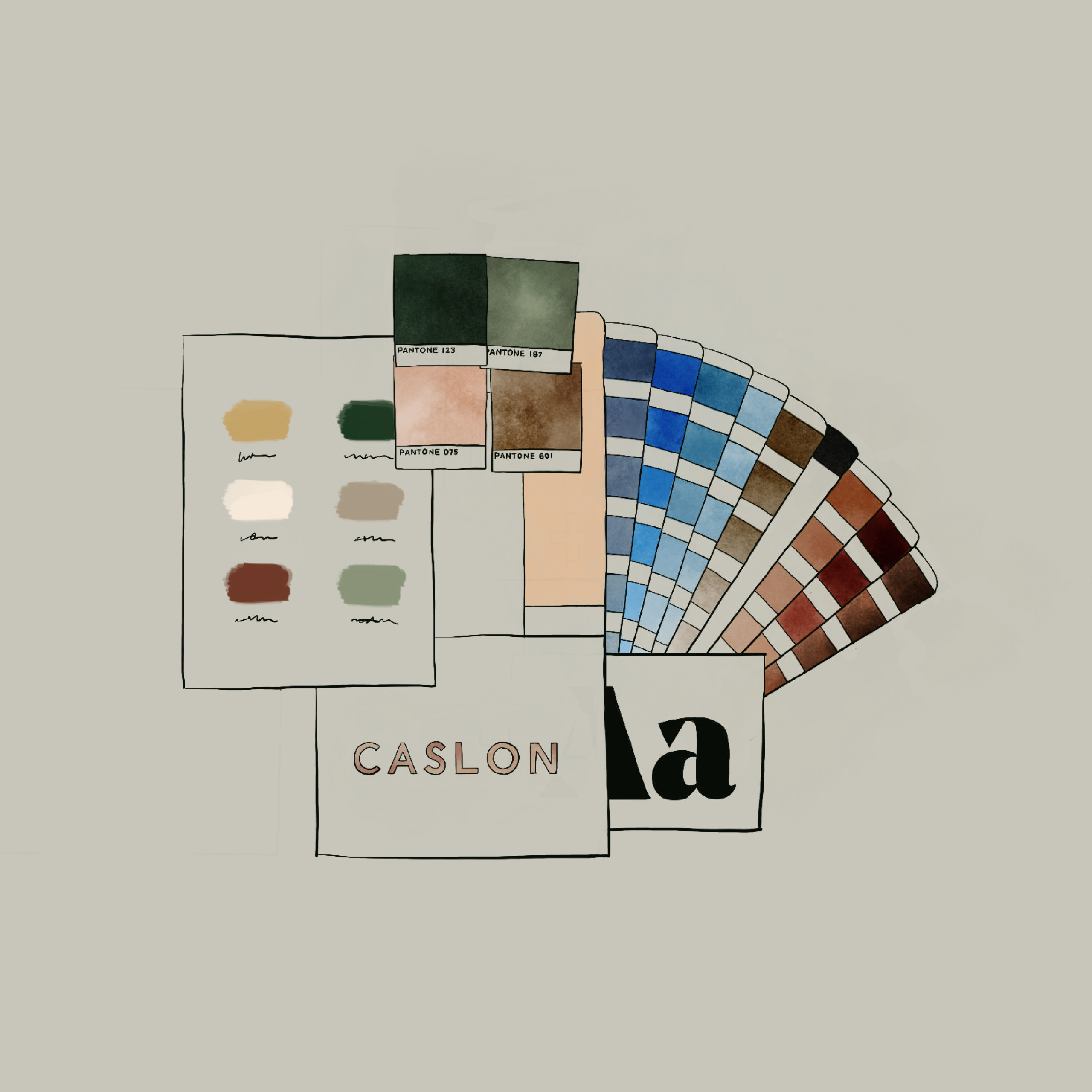The first step to any branding project is to uncover the story. Every other decision will support the storyline, and so today I want to show you how to find it.
The Foundation
What does your business sell?
The brand you create must match the business it represents. So think on the most basic premise here. For example,
-
I sell photographs to seniors in high school.
-
I create digital systems for online businesses.
-
I sell astrology courses online.
Why did you decide to be the one to sell it?
Think about what happened in your life that made you interested in your product and decide that you would be the perfect person to sell it. For example,
-
I capture the moment in a teen’s life before they go to college, because I remember what it was like to be anxious and excited to leave home and start my own journey.
-
I help overwhelmed freelancers create systems to simplify their lives because I’ve seen too many of my creative friends burn out trying to run their businesses.
-
I teach others how to use astrology to better understand themselves and the world around them because the stars have played a pivotal role in my own spiritual life, and I want others to experience the same joy.
my story
“I am a designer because I love to make things beautiful. I love consistency and simplicity. My mind is constantly coming up with ideas, but my personality is pretty strategic. I mull over things before making decisions. I consume books like most consume coffee. Branding is my way of storytelling because I’ve learned I’m not a fiction writer. I would be a journalist if I wasn’t a designer, so hearing people’s experiences is one of my true joys. Uncovering a story is just about as exciting as telling it.”
The Audience
Who are you speaking to?
You do not want to be the brand for everyone. The most successful stories have characters, the kind that really stick in your head. And your business is no different. So think about who you’re writing this story for. For example,
-
I am a nutritionist who works with women navigating post-partum.
-
I am a copywriter who specializes in writing about travel for hospitality brands.
-
I am an online teacher who creates programs to show newlyweds how to manage and blend their finances.
What is this character like?
Think about the characters of your brand story, make a list of all the people you think you’d love to work with – industries, large brands, influencers, or even local communities and shops.
Then make a list of everyone who could really benefit from what you offer and see meaningful change. Look for the places where these two lists overlap – that’s your sweet spot!
Do some creative brainstorming about their life, hobbies, interests, the way they describe their problems, what keeps them up at night, their morning routine and weird quirks, the stories they like to tell, the kind of community they keep.
my story
“I think I’m working with two – the new brand and the rebrand.
The new girl has been dreaming about starting her own business for awhile. She lives in a big city and works for an agency that she loves, but she just feels like her entrepreneurial spirit needs a bigger challenge. She’s learned a lot working for her company, and often thinks about how she would do things differently. But the fear of the unknown keeps her up at night. She may be good at her job, but will she be good at running a business? How does someone go about getting those first clients and customers, building an online audience, and when will she ever feel confident telling coworkers that she’s a business owner?
The rebrander has been running her online business for about three years now. The initial momentum is starting to wane and every time she scrolls through Instagram, it looks like someone new is stepping into her space. She’s struggling to keep up with projects while also feeling relevant. She’s seen a dip in sales, and can barely stand to look at her website – everything feels disjointed and inconsistent. How is she supposed to keep up and when will she feel like she’s made it? What is it that everyone else knows and she’s missing? Where did her inspiration go?”
The Emotions
How do you want them to feel?
As you dream about your character, think about the emotional reaction they would have when they discover your brand.
-
How does your product or service make them feel?
-
How would you want them to describe you to their friends?
my story
“I, of course, want the brand to feel editorial and story-driven, but also calming, familiar, warm, hospitable. There’s enough anxiety around building a business, and I don’t want the branding process to feel intimidating or pretentious. I want the project to feel natural, confidence-building, intimate, and thoughtful.
I want my girl to find my brand and take a deep breath. Maybe pull out a journal and start writing down ideas. Excitedly tell her friends. Feel cared for, valuable, included. I want my brand to operate like a home with a fresh pot of coffee and a warm meal. Lots of light and open spaces. Time for deep conversations and storytelling. A safe space.”
The Competition
Who are you competing with?
Chances are if you’re offering a creative service, even if it already feels pretty distinct, they’ve looked into solving their problem before.
-
Where did they go to find answers?
-
Who else is in your space?
How would your character see your competition?
Competition can be intimidating, but it can also be rewarding to find your place to shine. No one can tell your story like YOU. Do you know how many clever murder mysteries exist on bookshelves? How many cookbooks, travel guides, and women’s fashion magazines? Aren’t you glad that Domino Magazine didn’t stop short when they saw that Architectural Digest already existed? Or that Magnolia Journal realized that even though Real Simple was doing a great job, they also had a unique perspective?
Take a deep breath and look to see what you’re working with. In this step, just observe through your audience’s eyes.
my story
“When I look at the competition, I realize that the most important factor someone considers when looking for a designer is their style. So my competitors are the ones whose taste aligns with mine. The second thing I look for is approach. Branding is about more than just the design, it’s also the experience. It’s collaborative and strategic. What strengths and skills make a designer more than just an artist, but a problem-solver? What do I see as a designer that magically makes someone successful? How might my audience perceive that secret ingredient?”
The Noteworthy
What makes you stand out from everyone else?
Now consider how you stand out. Sure, you’ve seen the competition and you may have read a few of their own stories, but now it’s time to tell your own. Brag a little. You don’t have to completely reinvent the wheel, but give it a fresh take. For example,
-
I’m an interior designer who sees other successful designers like Studio McGee and Kelly Wearstler, but I’ve also realized that I live in the suburbs and have figured out how to imagine spaces like theirs on a budget and can teach other families how to do the same.
-
I’m a Squarespace web designer and I’ve seen all the other templates and designers out there, but I have so much experience working with therapists who have online clients and have figured out how to create calming designs that invite a safe space for sharing.
my story
“For so long I focused on competing as a logo designer and kind of missed the secret sauce staring right in front of me. I would publicly share my branding projects and lay out magazines and books on the side for those who asked. But why did those two things need to be separate? I realize that my love of books and story and layout and building intrigue are the very tools I take into my process as an identity designer. It’s the part clients comment on, so why not lead with it?
In this rebrand, I plan to fully embrace my love of publishing, and weave it into all of my communication and experiences. This will be the foundation of my brand and the thing that excites me most to share.”



